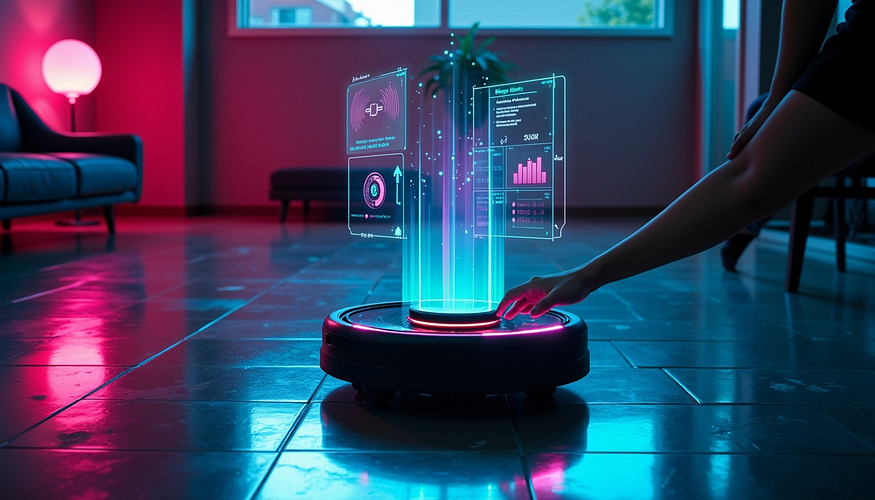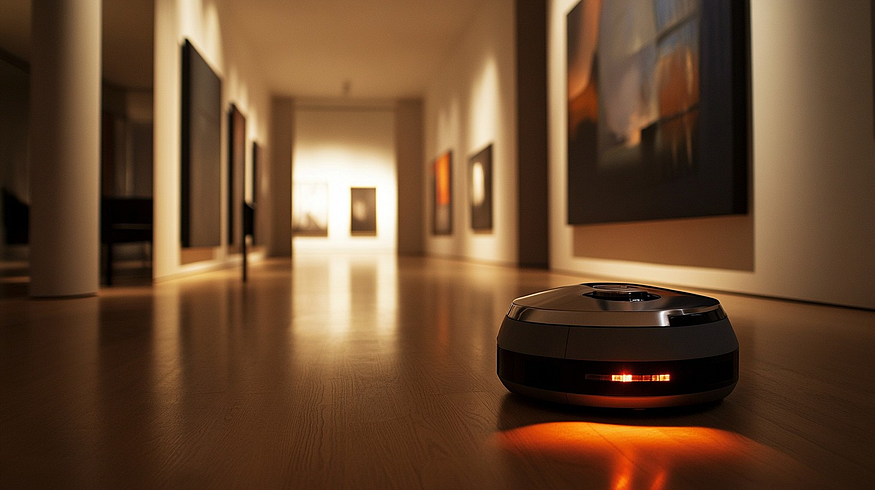The Secret to Powerful Cleaning Robots? Smart Electronics Design
 Auckam
AuckamTable of Contents
Why Electronics Design Matters for Cleaning Robots
Core Electronics Components in Industrial Cleaning Robots
2.1 Microcontrollers and Processors
2.2 Motor Drivers and Controllers
2.3 Sensor Systems
2.4 Power Systems
2.5 Communication ModulesHow Smart Electronics Enhance Cleaning Robot Performance
3.1 Autonomous Navigation
3.2 Adaptive Cleaning Modes
3.3 Self-Diagnostics and Maintenance Alerts
3.4 Ruggedness and ReliabilityReal-World Example: Industrial Floor Cleaning Robots
Future Trends in Electronics for Cleaning Robots
Conclusion

The Secret Behind Powerful, Efficient Cleaning Robots? Advanced Electronics Design
The secret behind powerful, efficient cleaning robots lies in advanced electronics design — enabling precise control, durable operation, and intelligent automation. Whether it’s industrial cleaning robots scrubbing factory floors or autonomous vacuum bots in offices, smart electronics are the brains and nervous system that allow these machines to clean thoroughly, adapt to complex environments, and operate reliably over long hours.
If you want to understand how modern cleaning robots deliver outstanding performance and why electronics design is the key differentiator, keep reading. This article breaks down the essential role of electronics in powering industrial cleaning robots and how innovation is driving the future of automated cleaning.
Why Electronics Design Matters for Cleaning Robots
Cleaning robots operate in tough environments, often facing dirt, moisture, and heavy use. Their ability to navigate complex spaces, detect obstacles, and perform cleaning tasks autonomously depends largely on their electronic systems.
A well-engineered electronics design ensures:
Efficient motor control: For precise movement and cleaning action
Sensor integration: To map spaces, detect dirt, and avoid obstacles
Robust power management: For long battery life and safe operation
Durability: Protection against dust, water, and impacts
Without sophisticated electronics, cleaning robots wouldn’t be able to maintain the reliability or effectiveness expected in industrial environments.
Core Electronics Components in Industrial Cleaning Robots
1. Microcontrollers and Processors
These act as the robot’s brain, running the software that controls everything from movement to cleaning cycles. Powerful microcontrollers enable real-time decision-making and sensor fusion.
2. Motor Drivers and Controllers
Precise motor control is essential for navigating and adjusting cleaning patterns. Electronics regulate speed, torque, and direction of wheels and brushes, ensuring consistent cleaning quality.
3. Sensor Systems
Cleaning robots rely on sensors such as:
LIDAR and ultrasonic sensors for distance measurement and obstacle detection
Optical sensors for dirt detection
Gyroscopes and accelerometers for navigation stability
Electronics design ensures seamless data flow from these sensors to the processor for real-time analysis.
4. Power Systems
Battery management electronics monitor charge levels, optimize power usage, and protect against overcharging or overheating, which is crucial for safety and longer operational cycles.
5. Communication Modules
Wireless connectivity modules (Wi-Fi, Bluetooth) enable remote monitoring, software updates, and integration with other smart systems.
How Smart Electronics Enhance Cleaning Robot Performance
Autonomous Navigation
Advanced electronics enable cleaning robots to build detailed maps of their environment and plan efficient cleaning paths. Sensors provide real-time feedback, while the processor adjusts motion and cleaning functions dynamically.
Adaptive Cleaning Modes
Robots can switch cleaning intensity based on detected floor types or dirt levels. Electronics control motors and brushes accordingly, optimizing battery life and cleaning results.
Self-Diagnostics and Maintenance Alerts
Electronics monitor system health and notify operators about maintenance needs, preventing downtime and extending robot lifespan.
Ruggedness and Reliability
Designing electronics with protective coatings and sealed enclosures ensures robots withstand industrial conditions like dust, moisture, and mechanical shocks.
Real-World Example: Industrial Floor Cleaning Robots
Consider an industrial floor cleaning robot deployed in a large warehouse:
It uses LIDAR sensors and a high-performance microcontroller to navigate aisles
Its electronics manage brush motors with variable speed depending on floor surface
Power electronics optimize battery use to cover large areas without recharge
The system sends performance data to a cloud dashboard via Wi-Fi, enabling real-time monitoring

Such capabilities are only possible through thoughtful electronics design tailored to the demands of industrial cleaning.
Future Trends in Electronics for Cleaning Robots
AI-Driven Cleaning Optimization
Integrating AI with electronics allows robots to learn the most efficient cleaning paths and adapt schedules based on usage patterns.
Enhanced Sensor Fusion
Combining data from multiple sensor types improves navigation accuracy and cleaning precision.
Modular Electronics for Easy Upgrades
Future designs focus on modular PCBs and plug-and-play components to simplify repairs and upgrades.
Energy Harvesting Technologies
Innovations in electronics may enable robots to recharge partially via kinetic or solar energy, increasing uptime.
Conclusion
The power and efficiency of cleaning robots — especially in demanding industrial settings — depend heavily on advanced electronics design. From controlling motors and processing sensor data to managing power and communication, smart electronics enable these robots to clean smarter, longer, and more reliably than ever before.
For companies seeking to automate cleaning processes and improve operational efficiency, investing in cutting-edge electronics design is the real secret to unlocking the full potential of industrial cleaning robots.
Every great cleaning robot starts with great electronics. If you’re planning your next product or upgrading an existing one, our design services are built to help you go further — faster.
See how we can help
Subscribe to my newsletter
Read articles from Auckam directly inside your inbox. Subscribe to the newsletter, and don't miss out.
Written by
